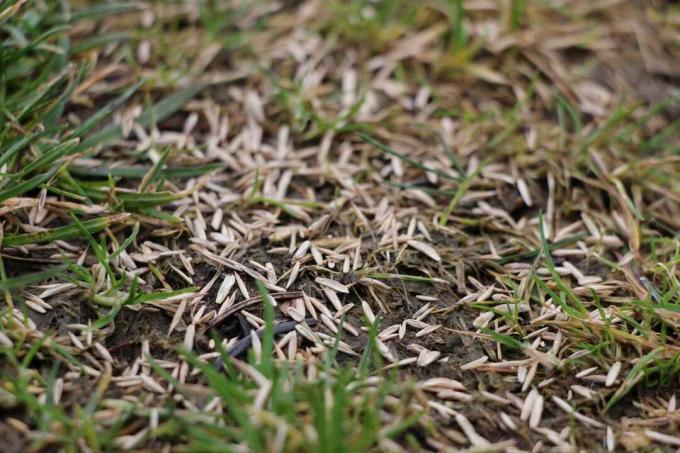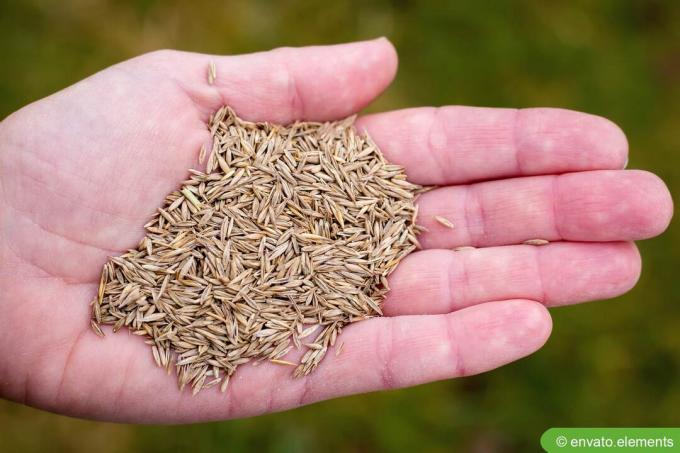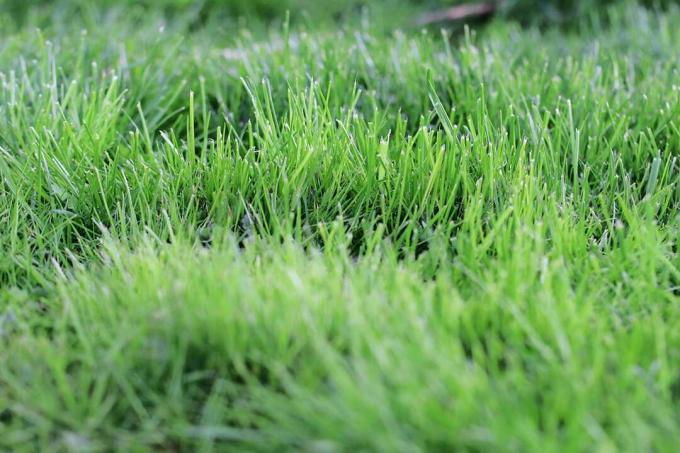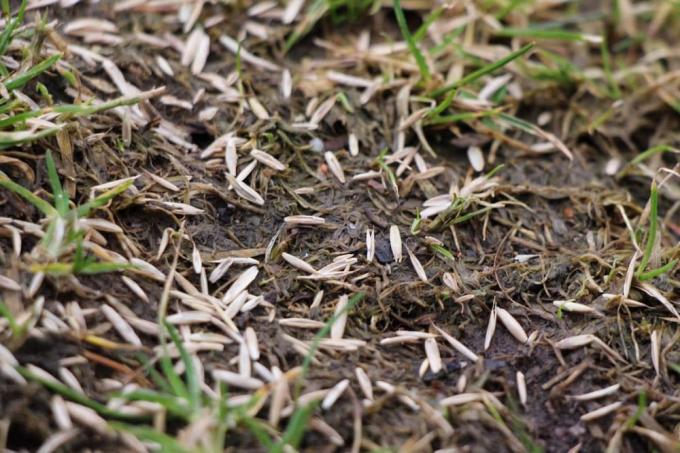

Table of contents
- time of sowing
- weather
- lawn type
- One-Thirds Rule
- mowing
- care and protection
From when you are allowed to walk on and mow a freshly sown lawn depends on various factors. These include, for example, the time of sowing and the weather as well as the length of the stalk. We will show you what you have to be aware of.
time of sowing
The best time for sowing is between April and May. Depending on the temperature, germination can be expected after seven to 28 days. If sowing was not possible in spring, you can do so between August and September. However, germination may then take longer.
Accordingly, mowing can only take place later. Again, this can prove difficult in colder regions when frost is already occurring. Because then the lawn can be damaged.
weather
Of course, the current weather contributes significantly to the germination time and growth of the plants. Temperatures of around 20 °C and light precipitation are ideal. In prolonged or heavy rain, the seeds can be washed away, leaving bare patches in the lawn.

This makes it necessary to overseed again. However, this should only be done after mowing. Otherwise, the shortening will be delayed and the result will be uneven.
lawn type
There are mainly three different types of lawn plants. The division is made into:
- resilience
- Location
- Purpose of use
There are varieties especially for the shade and others that are particularly suitable for frequent use. The most common are:
- shadow lawn
- Sports and play turf
- ornamental lawn
Depending on the species, you should also pay attention to the stalk height. This is a crucial indication of the cutting time. Shady lawns require more chlorophyll due to the lower light and therefore a stalk height of between nine and ten centimeters.

For ornamental breeds, 8.0 to 8.5 centimeters are sufficient for the first cut. Sports and play breeds for heavier loads can even be blended when the stalks are seven to eight centimeters high.
One-Thirds Rule
The one-third rule states that only the top third of the stalks may be cut off. With grass that is nine centimeters long, this means cutting it down to six centimetres. If the lawn has grown taller, measure the length with a ruler and divide by three. The calculated length may be cut off.
A notice:
This rule achieves a compaction of the lawn without taking too much strength from it. Therefore, if the grass is very long, it is better to cut it in stages.
mowing
Not only the timing of mowing is crucial. Other factors also play a role. These include, among others:
- soil condition
- the right cutting tool
- Weather
Prepare the surface accordingly by leveling and smoothing it. Cut on dry days when the sun is not shining and the lawn is not damp. Also make sure that the cutting blades of the lawnmower are freshly sharpened. Otherwise, the cutting tools can pull the lawn plants out of the ground.

This is the case when the stalks are not yet properly rooted. Therefore, always wait for the correct length before stepping on and cutting the lawn. Also check the wire, knife or string beforehand and keep them clean and functional.
Another disadvantage is that a blunt cutting tool will not straighten the cut surfaces. Instead, they fray and are therefore a target for diseases and parasites.
Tip:
If possible, the lawn should not be walked on for a day before mowing. Through use, stalks bend and the mowing result is not even.
care and protection
After the first mowing, you should continue to be careful with the lawn. If possible, you should not enter it immediately after cutting. It is also important to water it sufficiently and, if the soil has not been prepared beforehand, to fertilize it.
 Home editorial office
Home editorial office
Learn more about creating a lawn

Just sprinkle lawn seed: is that enough?
At some point, every lawn will have one or two bare spots, which you can best close with quick overseeding. Read why simply sprinkling the lawn seed is often not such a good idea.

Straighten the garden and level the lawn: 11 tips
In order to be able to use your garden as effectively as possible, a flat surface is much better. Nevertheless, many floors and lawns are uneven, which makes gardening noticeably more difficult. With the right tips, you can straighten your lawn and soil.

Herb meadow: 6 tips for creating
A herb meadow is not only pretty to look at, but also very easy to care for. In this article, we will tell you how you can create a herb lawn!

Creating a flower lawn | 8 tips on seeds and care
If you want to create a flower lawn, you need patience and diligence. The effort is already worth it from the second year. Then the mixture of wildflowers and grasses blooms in colorful tones. Maintenance is reduced to a minimum in the years that follow.

Laying turf | Information on preparation, costs, timing and maintenance
If you don't want to wait long for your lawn to grow, rolled turf is a sensible alternative. But even with the pre-cultivated lawn rolls that can be laid like a carpet, there are a few things to consider. You can find helpful information about preparation and installation here.

Germinating grass seeds: how long does it take for lawn seeds to germinate?
A beautiful lawn is the pride of many a gardener. Before a dense lawn has grown, the challenge is to get the grass seed to germinate. The germination time depends on various factors, including the quality of the seed.



